Okay, here’s something that won’t surprise you: teenagers are tired of fake, cookie-cutter stories. UCLA researchers recently found that American teenagers want books that actually reflect their real lives and families – not some adult’s weird idea of what teen life should look like.
This hits close to home for me. I remember being sixteen and desperately searching library shelves for characters who felt real, who faced struggles that actually mattered, who weren’t just walking stereotypes of what adults thought teenagers should be.

The landscape of teen literature has seriously evolved. We’re seeing stories that tackle mental health without talking down to you, explore diverse identities with actual authenticity, and address real social issues without that cringy “very special episode” vibe. These aren’t your typical “teen problem” books – they’re sophisticated stories that respect your intelligence while giving you the emotional punch you’re looking for.
So what makes a book actually stick with you as a teen? It’s pretty simple – the emotions have to feel real, and you need to see yourself (or people like you) in the pages. The most powerful teen stories are like windows into different experiences while also being mirrors that reflect your own struggles and victories.
What Makes Stories Actually Connect with Teenagers
Understanding what separates mediocre teen fiction from life-changing literature comes down to six things: whether it’s relevant to your actual life, if the emotions feel genuine, whether you can see yourself represented, if you learn something without feeling lectured, if it handles serious topics without being weird about it, and whether it gets how teenagers actually live today.
Relevance and Relatability
Stories that hit different don’t just throw a teenage character into some random plot – they actually capture what it’s like to be a teenager right now. That means dealing with real stuff: social media pressure, figuring out who you are, academic stress, and navigating all those complicated social dynamics that adults love to dismiss as “drama.”
Here’s the thing – teenagers today are dealing with climate anxiety, political chaos, and social media’s impact on literally everything. The best stories get that your world is vastly different from what previous generations experienced, but they also understand that growing up and finding yourself are still universal experiences.
Take “The Hate U Give” – instead of some adult’s perspective on social justice, Angie Thomas shows you exactly how a 16-year-old processes witnessing her friend’s death, deals with switching between her neighborhood and prep school personas, and finds her voice in activism. It feels authentic because it’s told from a genuinely teenage point of view.
Emotional Authenticity
Real talk – teenagers have finely tuned BS detectors. You can spot fake dialogue, unrealistic situations, and condescending voices from miles away. The most powerful teen stories feature genuine emotional experiences – the messy, complicated feelings that don’t get wrapped up neatly in one chapter.
This authenticity goes way beyond just “getting the voice right.” It means understanding how trauma actually affects people, how relationships develop and change, and how figuring out your identity happens gradually rather than through some big dramatic moment. Writers who respect teenage emotional intelligence create stories that actually matter.
If you’re thinking about writing your own stories, sometimes you just need a little push to get started. There are tools out there like story generators that can help spark ideas for developing realistic characters that actually resonate with readers your age.
Diverse Representation
Today’s teenagers are the most diverse generation in history, and you expect to see yourselves reflected in literature – not just in terms of race and ethnicity, but across everything that makes you who you are: your family situation, who you love, how you identify, your economic background, your abilities.
Good representation goes way beyond just checking boxes. It means authentic cultural details, avoiding stereotypes, and making sure diverse characters are actual people rather than token representatives of their communities.
Here’s what actually matters when picking stories that connect:
Relevance & Relatability means addressing real teen concerns like social media pressures, identity formation, and academic stress – not outdated references or adults trying to write “teen speak.”
Emotional Authenticity is about genuine feelings and realistic character development – not oversimplified emotions or unrealistic dialogue, but messy healing processes and gradual self-discovery.
Diverse Representation includes authentic inclusion across all aspects of identity – avoiding token diversity and stereotypical portrayals in favor of intersectional characters with cultural authenticity.
Educational Value comes through natural learning opportunities within compelling stories – not heavy-handed messaging or obvious moral lessons, but historical context and philosophical questions woven naturally into the plot.
Age-Appropriate Content means thoughtful handling of mature themes – not sanitized unrealism or shock value content, but serious topics presented with proper context.
Contemporary Context reflects current technology and social landscapes – not dated references that ignore modern realities, but authentic social media integration and awareness of current events.
Educational and Growth Value
The most impactful teen stories offer more than just entertainment – they give you opportunities for personal growth, critical thinking, and seeing the world differently. This doesn’t mean getting lectured or dealing with obvious moral lessons. Instead, it means stories that naturally make you question assumptions, consider different perspectives, and think deeply about complex issues.
You can learn about history, different cultures, scientific concepts, or big philosophical questions – but the key is that these elements feel like natural parts of compelling stories rather than homework disguised as fiction.
Age-Appropriate Content
Finding the right balance between respecting your maturity and avoiding inappropriate content requires careful consideration. You can handle complex, serious topics when they’re presented thoughtfully and with appropriate context.
Age-appropriate doesn’t mean sanitized or unrealistic. It means handling sensitive subjects with care, providing context for difficult situations, and making sure challenging content serves the story’s purpose rather than existing just for shock value.
Contemporary Context
The best teen stories reflect how you actually live – understanding how social media really functions in your life, acknowledging current events that shape your worldview, and recognizing the unique challenges facing your generation.
Contemporary context also means avoiding outdated references or technology that immediately dates a story. The goal is creating narratives that feel current and relevant while exploring universal human experiences.
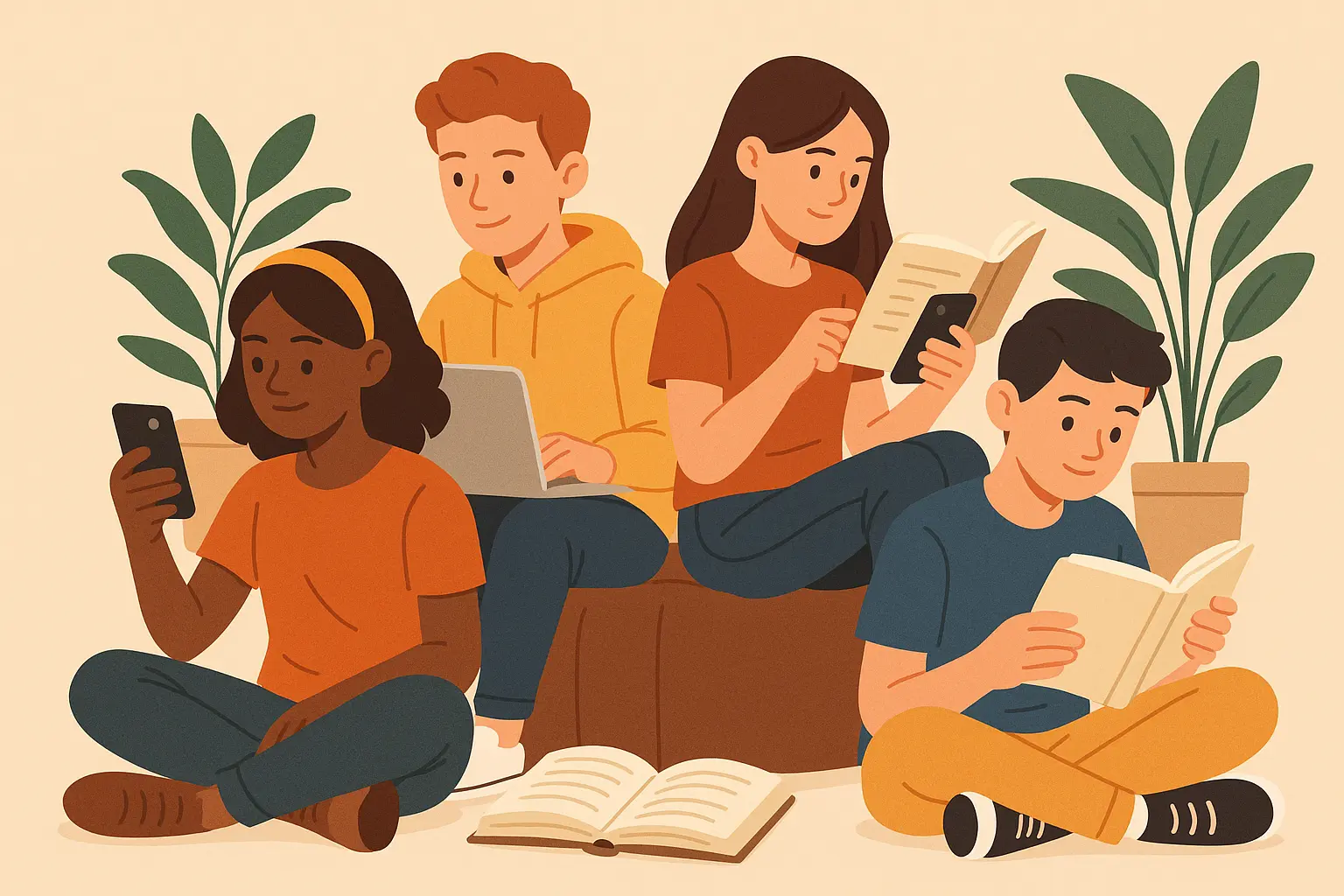
5 Powerful Coming-of-Age & Identity Stories
These five coming-of-age stories explore identity through different lenses – from multiverse science fiction to transgender experiences – giving you authentic representations of the complex journey toward figuring out who you are and accepting yourself.
1. “The Space Between Worlds” by Micaiah Johnson
Imagine being able to hop between different versions of reality – but only because you’re dead in most of them. Yeah, it’s as wild as it sounds. Cara’s story will have you questioning everything about who you are and what makes you… you.
What makes this story hit different for teenagers is how it takes the ultimate question “Who am I really?” and explores it through this incredible premise that somehow feels emotionally grounded. Seeing different versions of yourself across realities forces you to think about how circumstances shape identity and whether your core self stays the same no matter what.
2. “Cemetery Boys” by Aiden Thomas
Yadriel is a transgender teenager trying to prove his identity to his traditional Latino family while solving a supernatural mystery. This story brilliantly weaves together cultural traditions, family dynamics, and gender identity in a way that feels both magical and deeply personal.
What I love about this book is that it doesn’t make Yadriel’s transgender identity his only defining characteristic. Instead, you get this fully realized character dealing with family expectations, cultural heritage, and supernatural abilities while also navigating his gender identity journey.
3. “The Poet X” by Elizabeth Acevedo
Written entirely in verse, this follows Xiomara, a Dominican-American teenager who discovers her voice through poetry despite family and cultural expectations. The story captures the intensity of teenage emotions while exploring religious pressure, cultural identity, and artistic expression.
Acevedo’s verse format perfectly captures how teenage thoughts and emotions actually flow. The poetry becomes both the story’s format and its central theme, showing how artistic expression can be a path to self-discovery and empowerment.
4. “I Am Not Your Perfect Mexican Daughter” by Erika L. Sánchez
After her sister’s death, Julia struggles with grief while challenging her family’s expectations and cultural traditions. This story honestly portrays the complexity of cultural identity for second-generation immigrants, showing how you navigate between different worlds and expectations.
The novel doesn’t shy away from difficult topics including mental health, family conflict, and cultural pressure. Julia’s journey toward understanding herself and her family creates a story that’s both specific to the Mexican-American experience and universal in its themes.
5. “The House You Pass on the Way” by Jacqueline Woodson
During a transformative summer, biracial teenager Staggerlee questions her sexuality and place in the world. Woodson’s contemplative storytelling creates space for quiet self-reflection and gradual self-discovery.
This story stands out for its patient approach to identity exploration. Rather than dramatic revelations or crisis moments, it shows how self-understanding often develops through small moments of recognition and acceptance. Here’s what these books get right – figuring out who you are isn’t some neat, tidy process with a clear beginning and end.
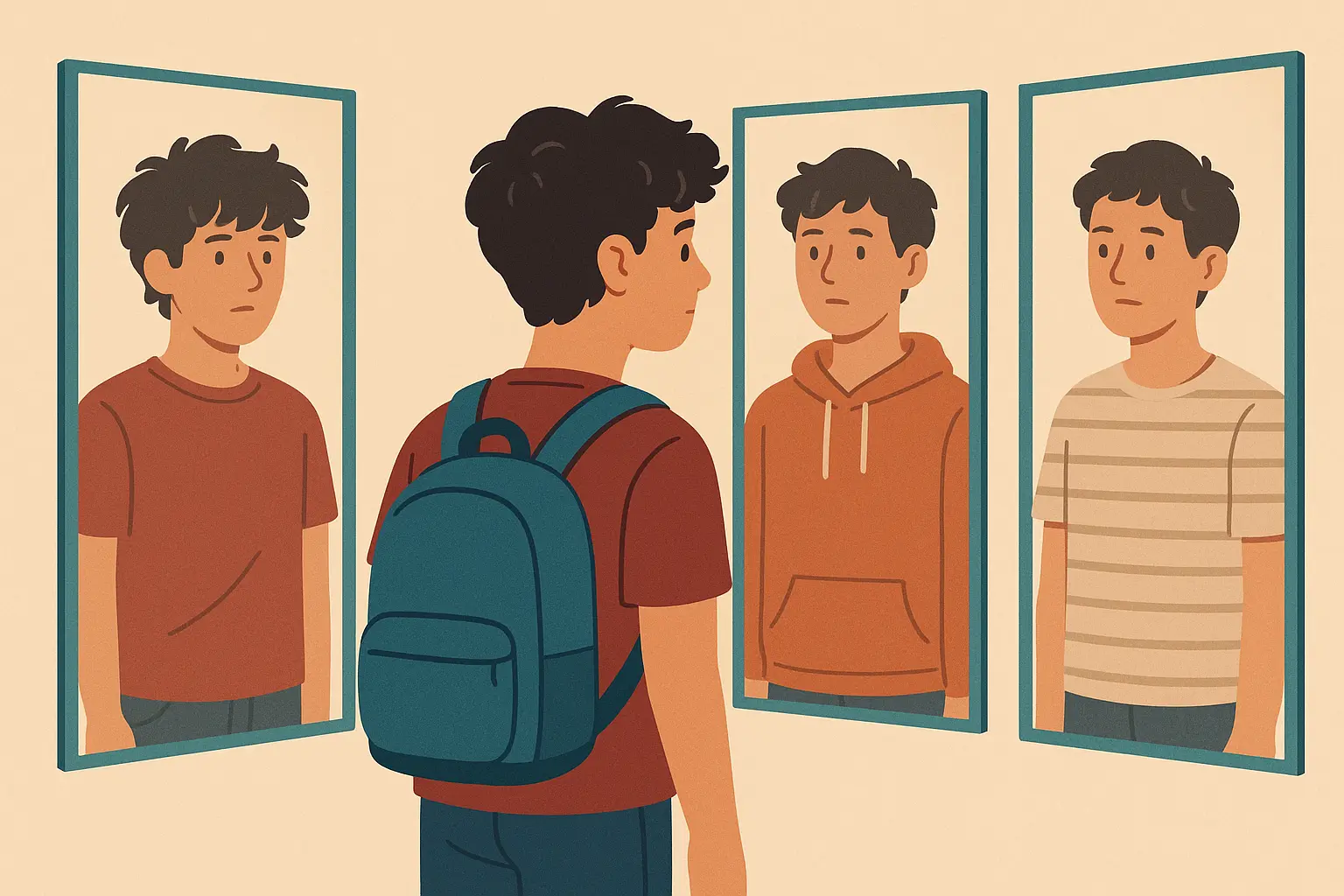
5 Essential Social Issues & Contemporary Challenges Stories
These five stories tackle urgent contemporary issues including police brutality, sexual assault, suicide, hate crimes, and racial injustice, giving you thoughtful, authentic narratives that address the complex social challenges you witness and experience every day.
6. “The Hate U Give” by Angie Thomas
Starr Carter witnesses the fatal shooting of her unarmed friend Khalil by police, forcing her to find her voice and stand up for justice despite pressure from all sides. This contemporary novel addresses police brutality and systemic racism through an authentic teenage perspective.
The story’s power lies in its honest portrayal of code-switching – how Starr navigates between her poor neighborhood and prep school environments. Thomas creates a narrative that’s both specific to the Black American experience and accessible to readers from all backgrounds.
7. “Speak” by Laurie Halse Anderson
This groundbreaking novel follows Melinda through her freshman year after a traumatic sexual assault. Anderson’s portrayal of trauma, healing, and finding your voice remains one of the most authentic and important books in teen literature.
What I love about this book is that it doesn’t turn trauma into some dramatic movie moment. It shows how healing actually works – messy, slow, and definitely not in a straight line. Melinda’s gradual journey toward speaking her truth provides hope while acknowledging how genuinely difficult healing from assault can be.
8. “Thirteen Reasons Why” by Jay Asher
Hannah Baker leaves behind tapes explaining the thirteen reasons why she chose suicide, forcing listeners to confront their roles in her decision. This controversial but important story addresses suicide, bullying, and how our actions affect others.
This one’s heavy, and you might want to talk to someone while you’re reading it. But it opens up conversations we really need to be having about mental health, peer pressure, and how seemingly small actions can have huge impacts on other people’s lives. It emphasizes the importance of reaching out for help and supporting struggling peers.
9. “The 57 Bus” by Dashka Slater
This non-fiction narrative examines a hate crime against a gender-nonconforming teenager and explores themes of restorative justice, identity, and forgiveness. Slater’s careful reporting creates a nuanced examination of a complex situation.
The book’s strength lies in its refusal to simplify a complicated situation. Instead of clear villains and heroes, it presents real people making choices with far-reaching consequences, encouraging you to think deeply about justice, identity, and redemption.
10. “Ghost Boys” by Jewell Parker Rhodes
Twelve-year-old Jerome becomes a ghost after being shot by police, joining other “ghost boys” throughout history who died from racial violence. This powerful story addresses police violence and racial injustice through a supernatural lens that makes difficult topics accessible.
Rhodes handles this sensitive subject matter with care, using the ghost perspective to explore both historical and contemporary racial violence while emphasizing the humanity of victims and the importance of bearing witness to injustice.
When teachers use “The 57 Bus” in classrooms, they often have students examine how Slater presents both Sasha (the victim) and Richard (the perpetrator) as complex individuals rather than simple archetypes. This approach helps you understand that real-world issues rarely have clear-cut solutions and encourages critical thinking about justice, accountability, and forgiveness. These stories prove that teen literature can tackle the most challenging social issues with sophistication and nuance.
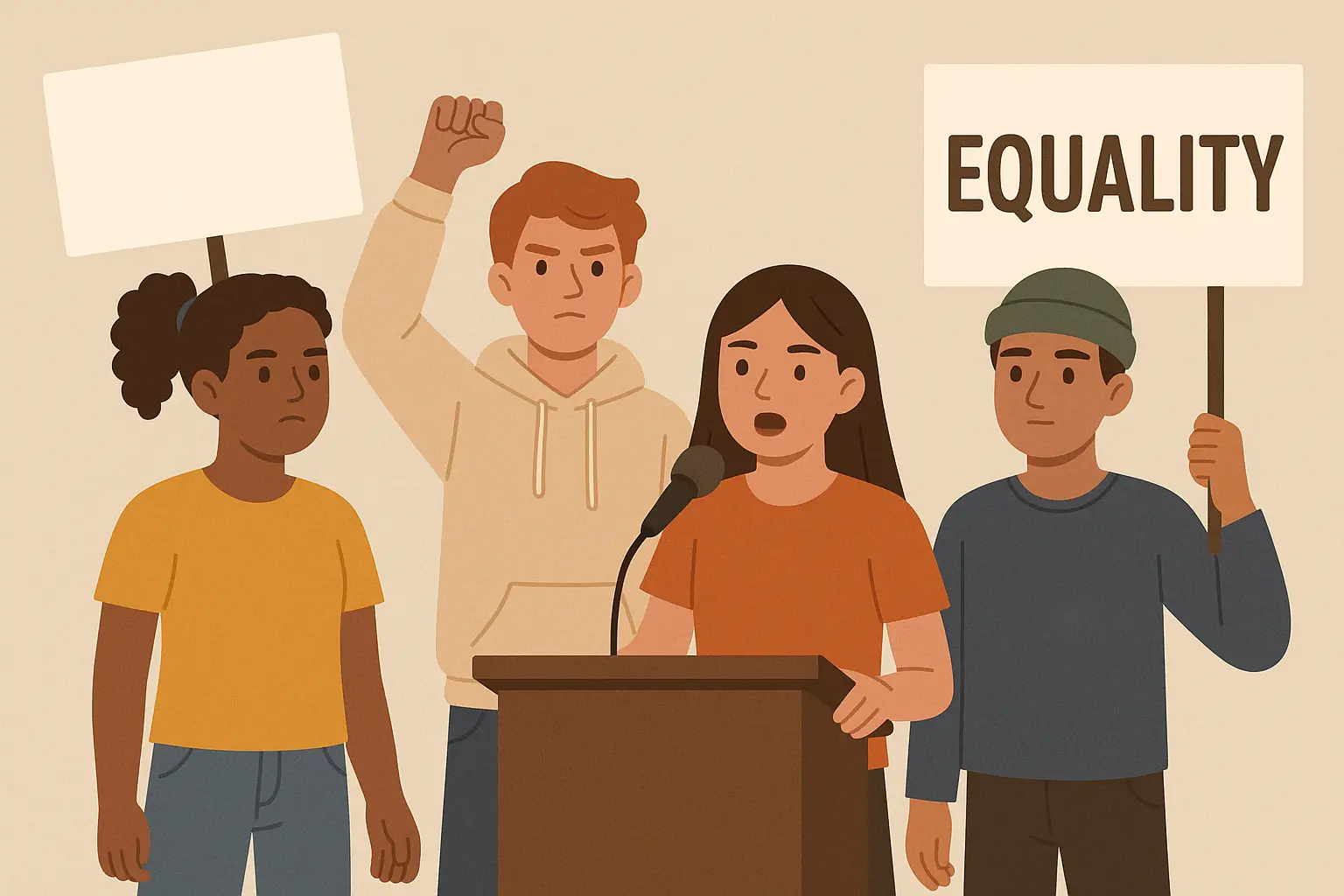
4 Captivating Fantasy & Science Fiction Adventures
These four fantasy and science fiction stories use imaginative worlds and speculative elements to explore real-world issues including oppression, environmental destruction, and systemic injustice, giving you engaging adventures that also make you think critically about contemporary challenges.
11. “Children of Blood and Bone” by Tomi Adeyemi
Set in a West African-inspired fantasy world, Zélie fights to restore magic to her oppressed people after it was violently suppressed by the ruling monarchy. This story weaves together incredible world-building with themes of systemic oppression and cultural identity.
Adeyemi creates a fantasy world that directly addresses real-world issues of prejudice and power. The magic system and cultural details draw from West African traditions, providing representation often missing from fantasy literature while telling a compelling adventure story.
If you’re interested in creating your own fantasy worlds, there are fantasy story generators out there that can help you develop unique magical systems and compelling adventures that resonate with readers your age.
12. “The Hunger Games” trilogy by Suzanne Collins
Katniss Everdeen becomes a symbol of resistance against an oppressive government that forces children to fight to the death for entertainment. This dystopian series explores themes of power, sacrifice, and resistance against unjust systems.
The trilogy’s enduring popularity stems from its unflinching examination of war, media manipulation, and political resistance. Collins doesn’t shy away from showing the real costs of violence and revolution, creating a complex narrative about fighting injustice.
13. “Dread Nation” by Justina Ireland
In an alternate history where zombies rose during the Civil War, Jane trains at a combat school to fight the undead while confronting ongoing racial injustice. This creative premise allows Ireland to explore historical
In an alternate history where zombies rose during the Civil War, Jane trains at a combat school to fight the undead while confronting ongoing racial injustice. This creative premise allows Ireland to explore historical and contemporary racism through a zombie apocalypse lens.
The story succeeds by using its speculative elements to highlight real historical injustices. The zombie threat becomes a way to examine how crisis situations often reveal and amplify existing social problems rather than solving them. These books demonstrate how genre fiction can address serious social issues while maintaining entertainment value.
14. “The Fifth Season” by N.K. Jemisin
This complex fantasy explores power, oppression, and environmental destruction through multiple perspectives in a world where people with geological powers are both feared and enslaved. Jemisin creates a narrative that challenges readers while addressing systemic oppression.
The book’s sophisticated structure and world-building reward careful reading while exploring themes of power, identity, and survival. It demonstrates how fantasy can address serious social issues while maintaining compelling storytelling and character development.
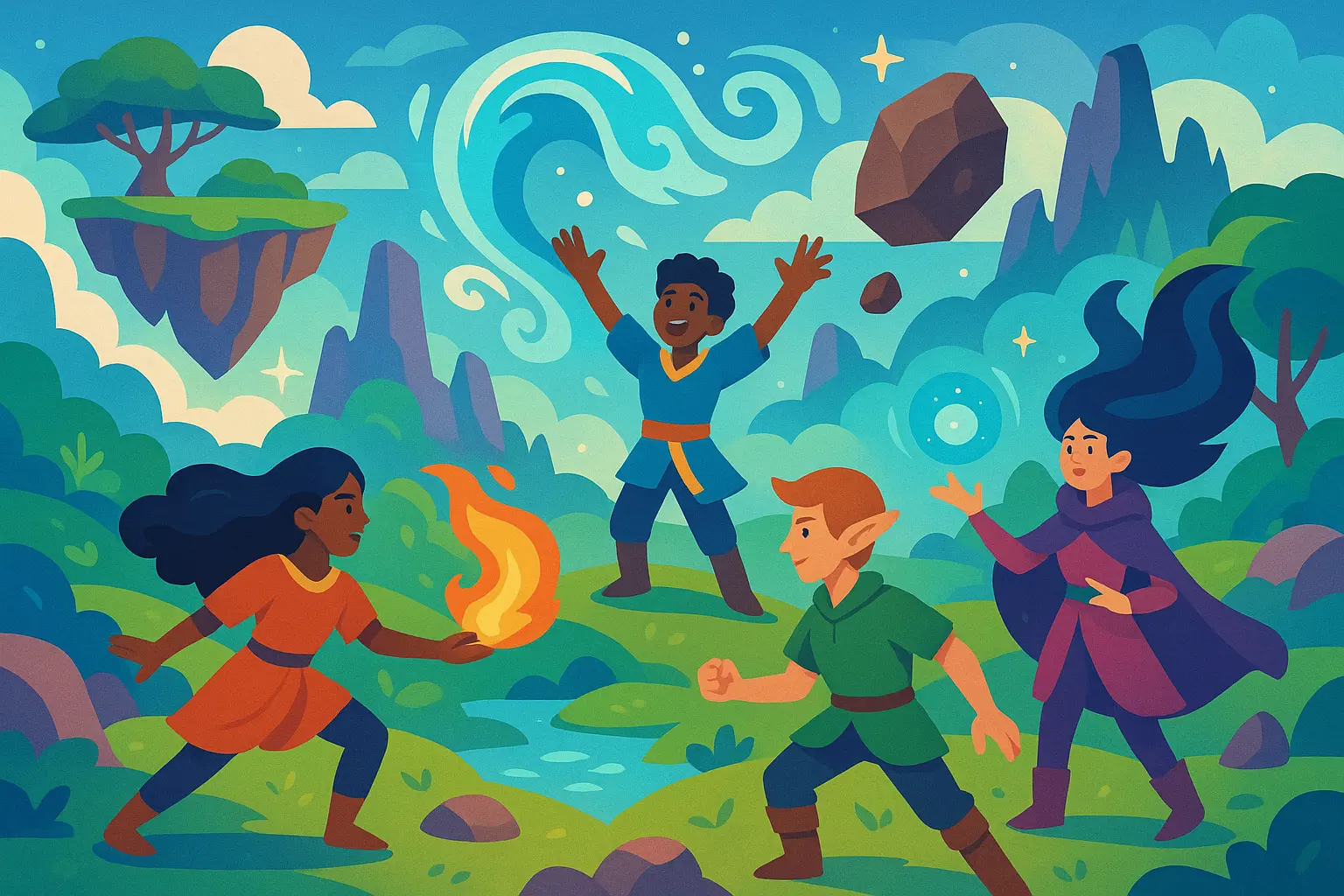
4 Heartfelt Romance & Relationship Stories
These four romance stories explore the complexities of teenage relationships, from first love and coming out experiences to cross-cultural connections, offering authentic portrayals of how young people navigate romantic feelings while dealing with identity, family expectations, and social pressures.
15. “Simon vs. the Homo Sapiens Agenda” by Becky Albertalli
Simon navigates his senior year while keeping his sexuality secret and falling for an anonymous classmate through email exchanges. This heartwarming story captures the complexity of first love alongside the challenges of coming out in high school.
The story works because Simon feels like a real teenager – he’s funny, anxious, and dealing with typical senior year stuff while also managing his secret identity. Albertalli creates authentic dialogue and situations that make Simon’s journey both specific and universal.
16. “Eleanor & Park” by Rainbow Rowell
Two misfit teenagers from different backgrounds fall in love during their daily bus rides to school. Set in the 1980s, this tender story explores first love against the backdrop of family dysfunction and economic hardship.
Rowell excels at capturing the intensity of teenage emotions and how first love can feel both earth-shattering and fragile. The story doesn’t romanticize difficult family situations but shows how connection with another person can provide hope and strength.
17. “The Sun Is Also a Star” by Nicola Yoon
Natasha and Daniel meet and fall in love over the course of a single day in New York City, while Natasha’s family faces deportation. This story weaves together themes of love, fate, immigration, and family expectations.
The novel’s structure – alternating perspectives over one day – creates urgency while exploring how chance encounters can change everything. Yoon addresses serious immigration issues while maintaining the story’s romantic core. These books prove that romance can tackle weighty subjects without losing emotional impact.
18. “Red: A Crayon’s Story” by Michael Hall
This picture book works for all ages, telling the story of a crayon labeled red who is actually blue. The simple story becomes a powerful exploration of identity, acceptance, and being true to yourself in relationships.
Despite its simple format, the book addresses complex themes about identity and acceptance that resonate with teenagers questioning their own identities. It shows how supportive relationships can help people discover and embrace their authentic selves.
For teens interested in writing their own romance stories, love story generators can provide creative prompts to explore authentic relationship dynamics and emotional connections.
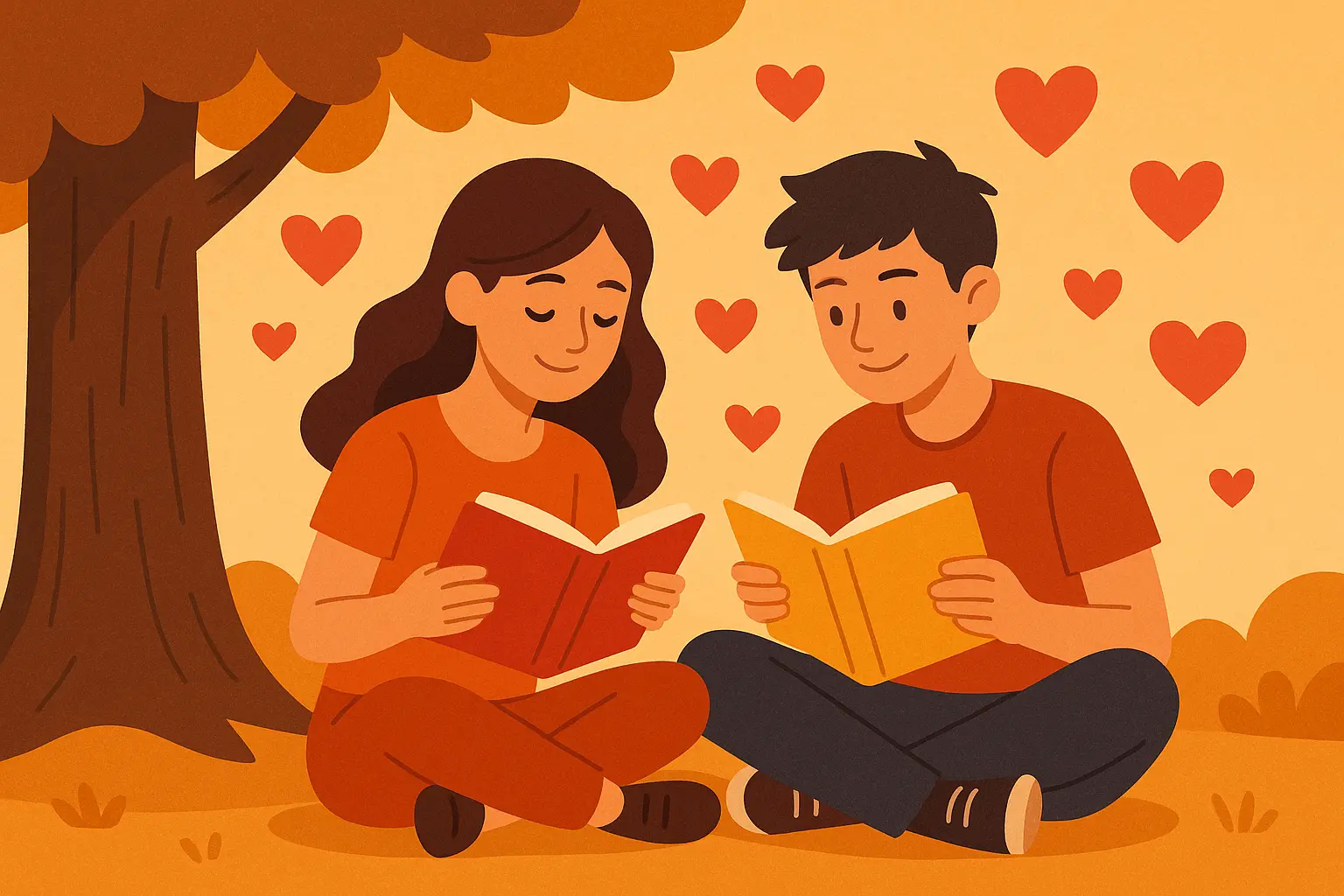
4 Important Mental Health & Personal Struggles Stories
These four stories provide authentic portrayals of mental health challenges including depression, anxiety, OCD, and bipolar disorder, offering you realistic representations of mental illness while emphasizing hope, recovery, and the importance of seeking help and building supportive relationships.
19. “It’s Kind of a Funny Story” by Ned Vizzini
Craig checks himself into a psychiatric hospital during a mental health crisis and discovers unexpected connections with other patients. This story balances serious mental health themes with appropriate humor and hope.
Vizzini’s authentic portrayal of depression and hospitalization (drawn from his own experiences) provides realistic insight into mental health treatment. The hospital setting allows for exploration of different mental health challenges while showing paths toward recovery.
20. “Turtles All the Way Down” by John Green
Aza investigates a mystery while dealing with anxiety and OCD that significantly impact her daily life and relationships. Green’s authentic portrayal of mental illness (based on his own experiences) creates one of the most realistic depictions of anxiety in teen literature.
The story succeeds because it shows how mental illness affects every aspect of life – relationships, school, family dynamics, and self-perception. Green doesn’t offer simple solutions but demonstrates how treatment, support, and self-understanding can help manage mental health challenges. These books handle mental health with unprecedented honesty and nuance.
21. “The Perks of Being a Wallflower” by Stephen Chbosky
Charlie navigates his freshman year while dealing with depression, trauma, and social anxiety. Written as letters, this story captures the intensity of teenage emotions while exploring themes of friendship, identity, and healing.
The letter format creates intimacy between Charlie and readers, making his struggles feel immediate and personal. Chbosky addresses serious topics including sexual abuse and mental illness while showing how supportive relationships can aid recovery.
22. “All the Bright Places” by Jennifer Niven
Violet and Finch meet on their school’s bell tower, both contemplating suicide, and develop a relationship that changes both their lives. This story explores mental illness, love, and the impact we have on each other’s lives.
The dual perspective lets you understand both characters’ mental health struggles while showing how relationships can provide both support and additional complexity. This one requires careful discussion due to its suicide content but opens important conversations about mental health.
Look, I know some of these books deal with really tough stuff. But here’s why they’re worth reading: they don’t treat you like you can’t handle real life. They show you that other people have been through similar things and made it through.
Depression & Hospitalization books like “It’s Kind of a Funny Story” focus on treatment, recovery, and hope – breaking stigma around seeking help.
Anxiety & OCD stories like “Turtles All the Way Down” show daily impact and relationships – helping you understand managing symptoms and building support systems.
Trauma & PTSD narratives like “The Perks of Being a Wallflower” explore healing and friendship – processing trauma and finding community.
Bipolar Disorder & Suicide books like “All the Bright Places” address love, loss, and impact on others – recognizing warning signs and crisis intervention.

3 Thrilling Adventure & Mystery Stories
These three adventure and thriller stories combine suspenseful plots with meaningful themes, from high school murder mysteries to dystopian survival scenarios, giving you page-turning entertainment that also explores trust, memory, identity, and the complexity of truth.
23. “One of Us Is Lying” by Karen M. McManus
When five students enter detention but only four leave alive, the survivors become prime suspects in their classmate’s murder. This mystery thriller explores secrets, assumptions, and the truth behind high school social dynamics.
The multiple perspective narrative lets you understand each character’s motivations while questioning their reliability. McManus creates authentic high school dynamics while building suspense around the central mystery.
24. “The Maze Runner” series by James Dashner
Thomas wakes up in a mysterious maze with no memory of his past, joining other teenagers trying to escape their prison. This dystopian thriller explores themes of memory, identity, and fighting corrupt systems.
The series succeeds by combining fast-paced action with deeper questions about memory, identity, and scientific ethics. The maze becomes both a physical challenge and a representation of the characters’ struggle to understand their situation.
25. “We Were Liars” by E. Lockhart
Cadence struggles to remember what happened during a family summer that left her with a head injury and gaps in her memory. This psychological thriller explores privilege, family secrets, and the unreliability of memory.
Lockhart creates an unreliable narrator whose gradual revelation of truth keeps you engaged while exploring themes of family dysfunction, privilege, and the stories we tell ourselves to cope with trauma. These books demonstrate how mystery and thriller elements can illuminate deeper truths about human nature.
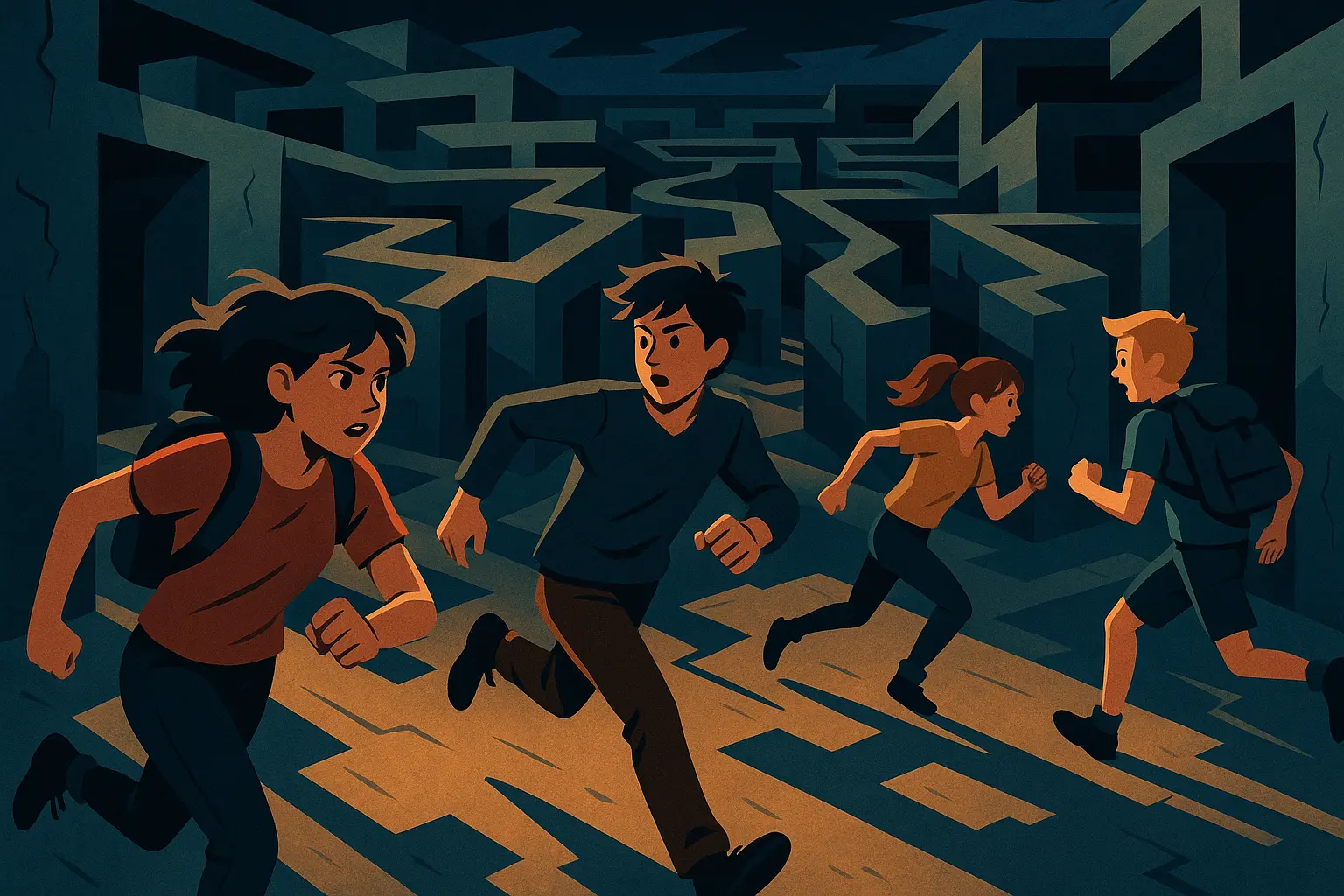
Deep Dive: Story Analysis and Examples
Let me break down why certain books hit different and others just… don’t. The most effective teen literature combines authentic voice, contemporary relevance, and meaningful themes in ways that actually resonate with teenage readers instead of talking down to them.
Real Talk: “The Hate U Give” Analysis
Angie Thomas creates a story that works on multiple levels – as a coming-of-age narrative, a social justice story, and a family drama. Starr’s voice feels authentic because Thomas understands how teenagers actually think and speak, especially when dealing with code-switching between different environments.
The story’s power comes from its refusal to simplify complex issues. Police brutality, systemic racism, and community dynamics are presented through Starr’s perspective without reducing them to simple good-versus-evil narratives. This complexity respects teenage readers’ intelligence while providing emotional resonance.
Key themes include dual identity, finding your voice, family loyalty, and the cost of speaking truth. These themes emerge naturally from the plot rather than feeling imposed, creating a story that entertains while encouraging critical thinking about social justice issues.
Why “Simon vs. the Homo Sapiens Agenda” Actually Works
Becky Albertalli succeeds by creating a protagonist who feels like someone you might actually know. Simon’s internal voice captures authentic teenage concerns – college applications, friend drama, family dynamics – while also dealing with his specific challenge of being closeted.
The story uses contemporary technology (email, social media) naturally rather than feeling forced or dated. Simon’s relationship with Blue develops through their email exchanges, showing how modern teenagers actually communicate and form connections.
Universal themes of identity, belonging, and first love make the story accessible to readers regardless of their own sexual orientation. The supportive family and friend relationships provide hope while acknowledging the real challenges LGBTQ+ teenagers face. These books succeed because they balance specific experiences with universal emotions.
A high school English teacher implemented a “Book Mirror” activity using “Cemetery Boys.” Students identified moments where they saw their own experiences reflected in Yadriel’s story – not necessarily the supernatural elements, but his struggles with family acceptance, cultural expectations, and finding his place in different communities. Even students who weren’t transgender or Latino connected with themes of proving yourself to family and balancing cultural heritage with personal identity.
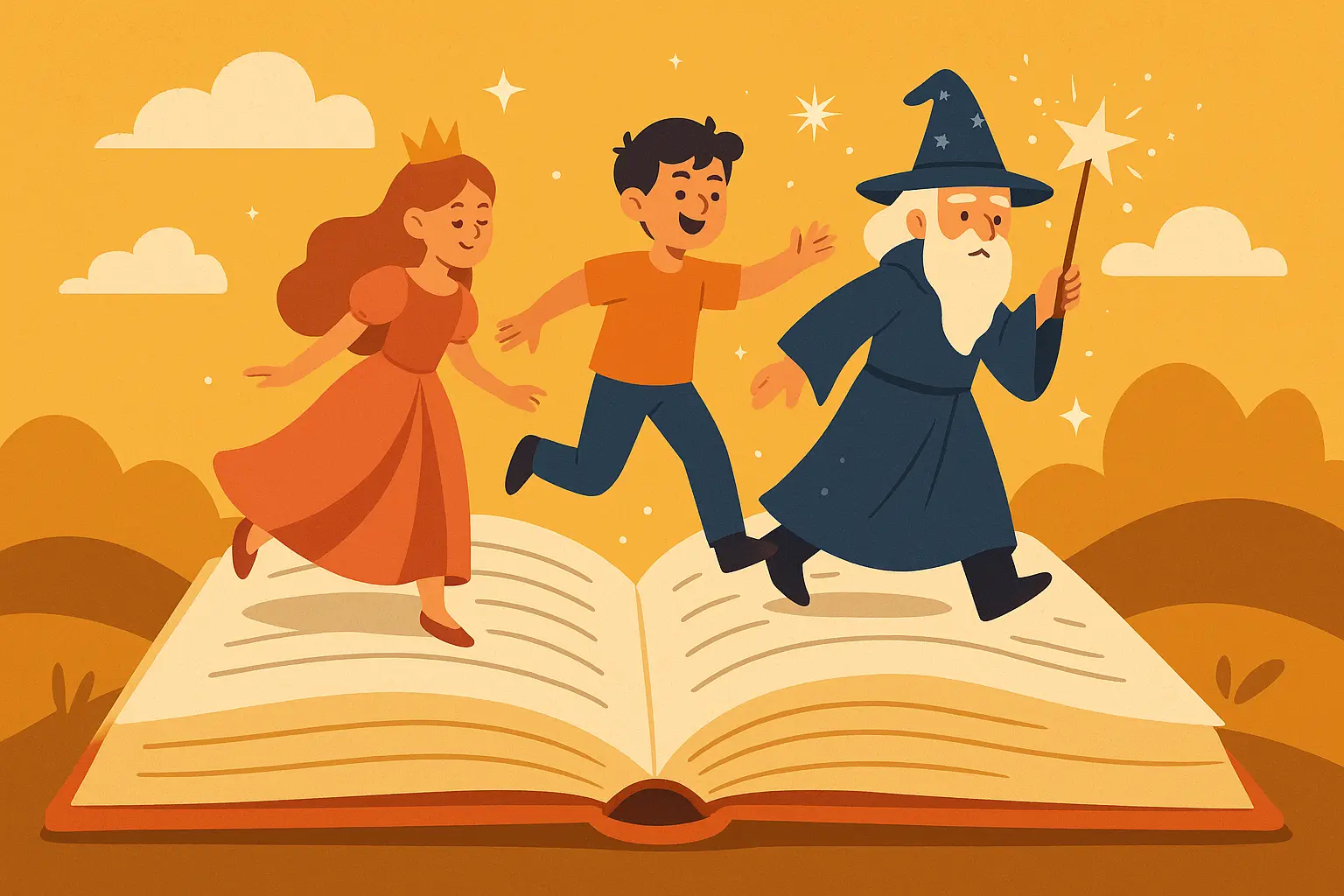
How These Stories Meet Essential Criteria
Looking at how successful teen stories fulfill the key selection criteria reveals patterns in effective teen literature, showing why certain books create lasting impact while others fail to connect with their intended audience.
“Cemetery Boys” – Why It Works
Relevance and Relatability: Addresses transgender identity and family acceptance – issues highly relevant to teens exploring their own identities and seeking family support.
Emotional Authenticity: Aiden Thomas writes from personal experience as a trans author, creating genuine emotional stakes and authentic character development throughout Yadriel’s journey.
Diverse Representation: Centers Latinx transgender experience with authentic cultural details, avoiding stereotypes while showing the intersection of cultural and gender identity.
Educational Value: Teaches about transgender experiences and Latino cultural traditions while entertaining, promoting understanding and empathy among readers.
Age-Appropriate Content: Handles mature identity themes appropriately without graphic content, making complex topics accessible to teenage readers.
Contemporary Context: Directly addresses current conversations about gender identity, family acceptance, and LGBTQ+ rights in modern society.
“Turtles All the Way Down” – What Makes It Real
Relevance and Relatability: Mental health representation addresses issues many teenagers face, providing authentic portrayal of anxiety and OCD symptoms.
Emotional Authenticity: John Green draws from personal experience with OCD, creating realistic portrayal of how mental illness affects daily life and relationships.
Diverse Representation: Shows mental illness authentically without stereotypes, representing often misunderstood conditions with accuracy and empathy.
Educational Value: Promotes understanding of mental health conditions while reducing stigma, encouraging help-seeking behavior among readers.
Age-Appropriate Content: Handles mental health topics sensitively while being honest about the challenges of living with mental illness.
Contemporary Context: Reflects current mental health awareness initiatives and modern approaches to treatment and support. These books demonstrate how personal experience can inform authentic storytelling.
Here’s what works across different categories:
Coming-of-Age stories like “Cemetery Boys” and “The Poet X” succeed through authentic voice and cultural depth, leading to identity validation and self-acceptance for readers.
Social Issues books like “The Hate U Give” and “The 57 Bus” work because of complex nuance and real-world relevance, developing critical thinking and empathy.
Fantasy/Sci-Fi stories like “Children of Blood and Bone” combine allegory for real issues with rich world-building, providing escapism with meaning and cultural pride.
Romance books like “Simon vs. Homo Sapiens Agenda” feature realistic relationships and universal themes, helping develop relationship skills and acceptance.
Mental Health stories like “Turtles All the Way Down” offer authentic representation and hope, reducing stigma and encouraging help-seeking.
Adventure/Mystery books like “One of Us Is Lying” provide compelling plots with character development, encouraging critical thinking about trust issues.
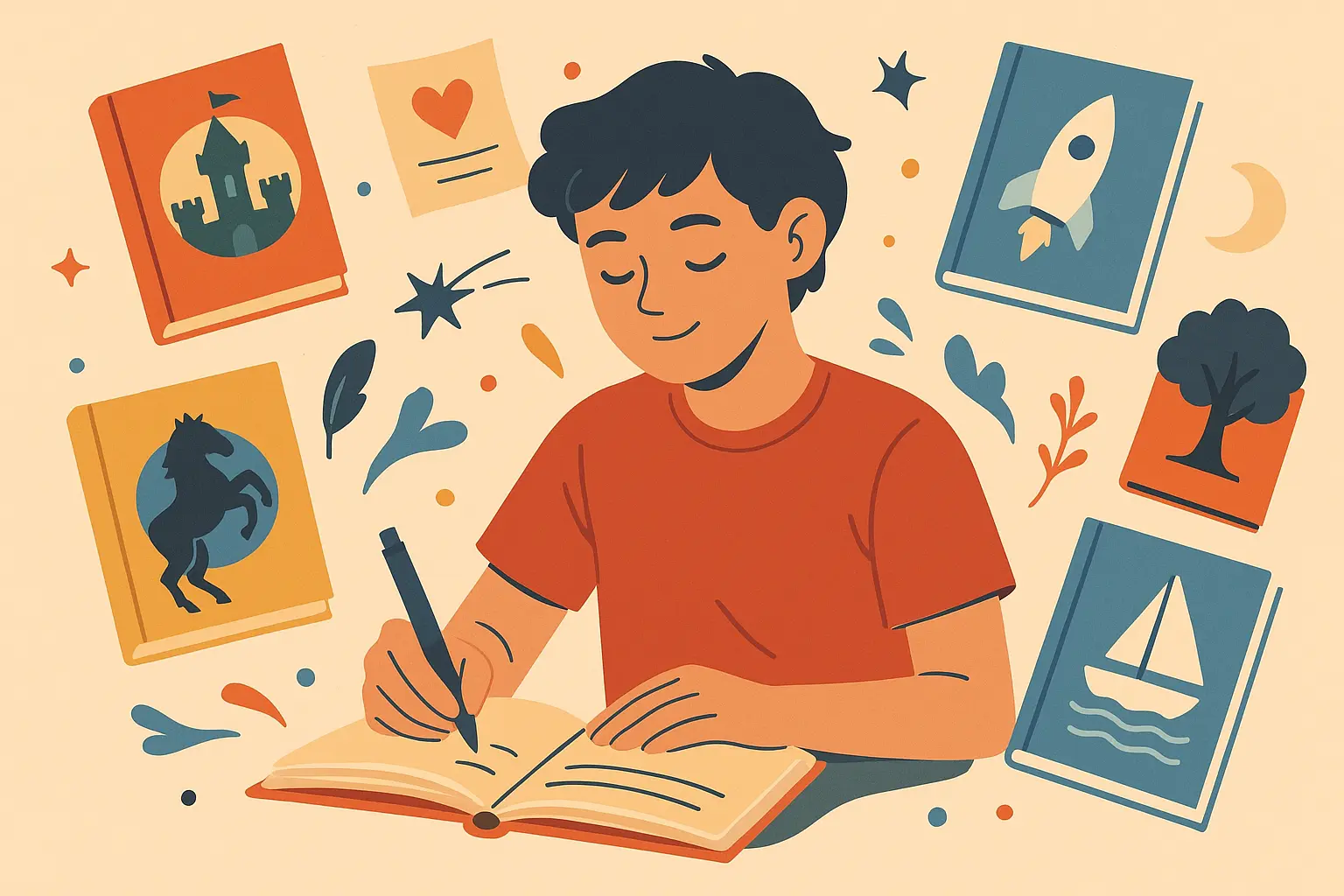
Empowering Teen Storytelling Through AI Innovation
While reading powerful stories provides inspiration and perspective, creating your own narratives helps you process experiences and develop your unique voice. AI-powered writing tools offer unprecedented support for overcoming common creative challenges.
The books we’ve explored demonstrate that authentic, well-crafted narratives can profoundly
The books we’ve explored demonstrate that authentic, well-crafted narratives can profoundly impact teenage readers. However, consuming great literature is only half the equation – you also benefit enormously from creating your own stories.
Breaking Through Creative Barriers
Many teens struggle with the intimidating blank page when trying to write their own narratives. You have stories to tell but don’t know where to begin. This creative paralysis can prevent you from exploring your experiences and developing your voice.
Nairrate’s Story Starters Generator provides compelling opening lines that can spark entire narratives, helping you begin your creative journey with confidence. These AI-generated prompts offer just enough structure to overcome initial hesitation while leaving plenty of room for personal creativity and authentic voice development.
Exploring Diverse Narrative Possibilities
Just as our recommended stories span multiple genres and themes, you benefit from experimenting with different types of storytelling. Whether you want to address social issues through dystopian fiction, explore identity through contemporary realism, or process emotions through fantasy adventures, having access to diverse story prompts encourages creative exploration.
Nairrate’s Story Prompt Generator offers creative challenges across mystery, romance, sci-fi, fantasy, and contemporary fiction – encouraging you to discover your preferred genres while developing versatility in your storytelling abilities. These books show the power of diverse narrative approaches.
Developing Authentic Characters and Compelling Plots
The most powerful teen stories succeed because of their authentic characters and engaging plots. Young writers often struggle with character development and narrative structure, unsure how to create compelling protagonists or maintain reader interest throughout their stories.
AI-powered writing tools can help you develop complex characters and engaging plots by providing structural support and creative suggestions. This guidance is particularly valuable for young writers still learning storytelling fundamentals while developing their unique creative voices.
Creating Stories That Matter
Whether you want to write about identity exploration, social justice issues, mental health challenges, or relationship dynamics – all themes prominently featured in our recommended books – having creative support helps you craft authentic, meaningful narratives that reflect your generation’s unique perspective and experiences.
Feeling inspired to write your own story? There are tons of tools out there that can help you get those ideas flowing when you’re stuck staring at a blank page.
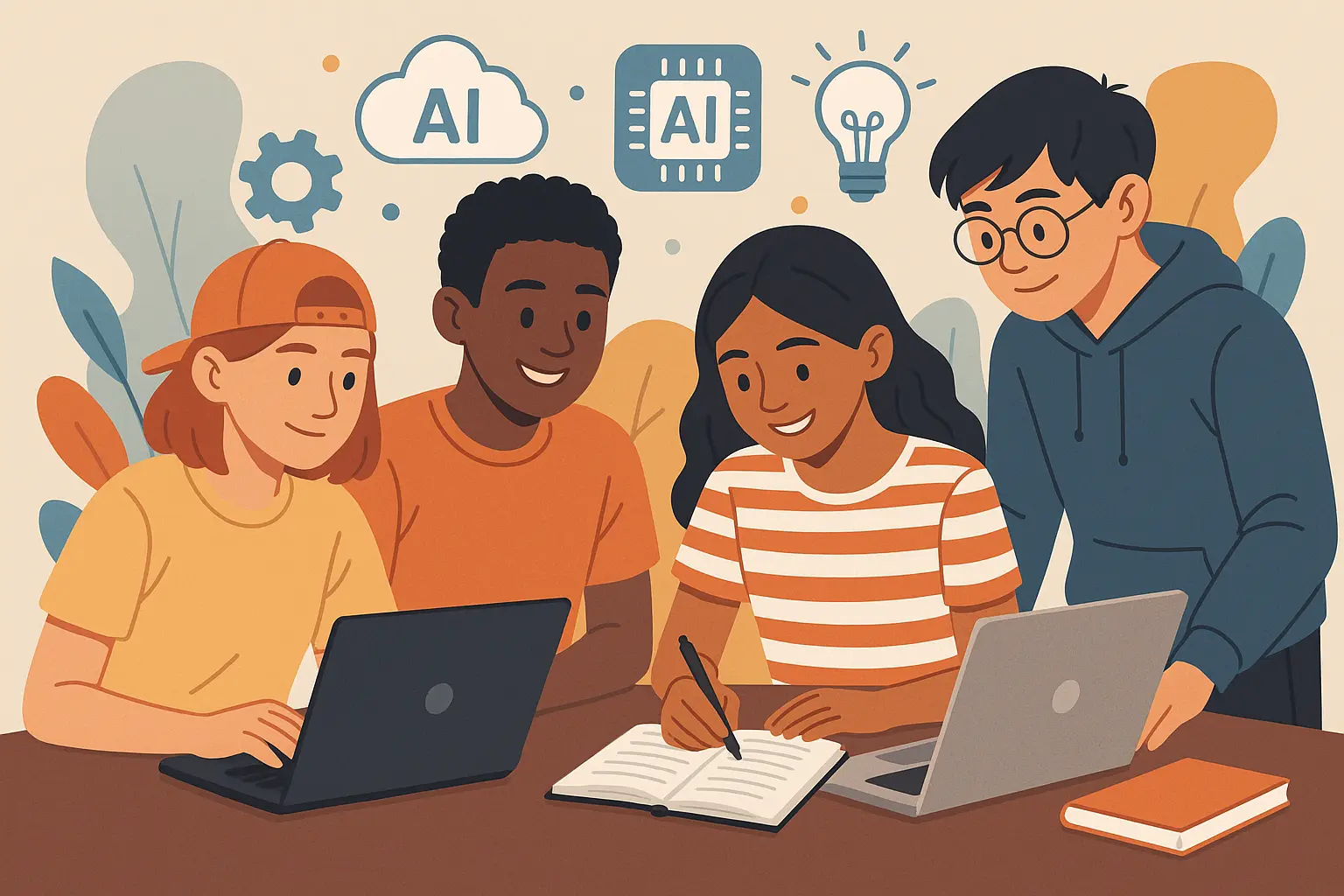
Final Thoughts
The future of teen literature lies in empowering young people to create their own authentic narratives, with the combination of literary inspiration and creative tools offering unprecedented opportunities for teenage voice development and storytelling innovation.
These 25 books represent more than just entertainment – they’re windows into different experiences, mirrors reflecting teenage struggles and triumphs, and tools for understanding our complex world. Each book offers something unique, whether it’s Angie Thomas’s authentic portrayal of code-switching, John Green’s honest depiction of mental illness, or Aiden Thomas’s groundbreaking transgender representation.
What makes these stories truly powerful isn’t just their individual merit but their collective impact. Together, they create a literary landscape that validates teenage experiences, challenges assumptions, and provides hope for the future. They prove that teen literature can be both entertaining and meaningful, accessible and sophisticated.
The teenagers reading these books today will become tomorrow’s storytellers, activists, and leaders. By consuming authentic narratives that respect their intelligence and reflect their experiences, they’re developing the empathy, critical thinking skills, and cultural awareness needed to create positive change in the world.
The best part about all these amazing books? They’re written by people who remember what it’s like to be your age, who respect that you can handle complex stuff, and who believe your thoughts and feelings matter. And maybe, just maybe, reading them will inspire you to write the next story that changes someone else’s world.
Reading great stories is transformative, but creating your own narratives can be equally powerful. The combination of literary inspiration and modern creative tools offers unprecedented opportunities for young people to develop their voices and share their unique perspectives with the world.



Add comment